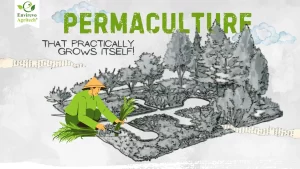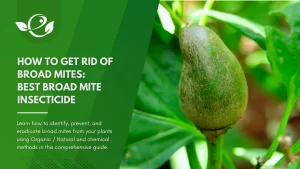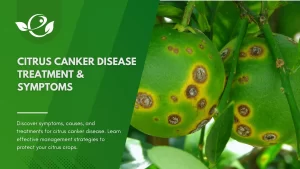Table of Contents
Cucumber beetles are a small but significant threat to home gardens. For gardeners who take pride in cultivating cucumbers, squash, melons, and other cucurbit plants, the arrival of cucumber beetles can spell disaster. These small, striped or spotted beetles wreak havoc by feeding on leaves, stems, and flowers, ultimately weakening the plant and reducing yield. What’s more, cucumber beetles are known vectors for bacterial wilt and cucumber mosaic virus, which can devastate entire crops if not addressed early.
Successfully managing cucumber beetles is essential for maintaining a healthy and productive garden. Fortunately, there are several proven methods to eliminate these pests without resorting to harmful chemicals or pesticides. This article dives deep into six expert-recommended ways to kill cucumber beetles while keeping your garden safe and healthy.
Let’s explore these methods, providing you with a comprehensive, step-by-step guide to protect your garden and ensure a bountiful harvest.
Understanding Cucumber Beetles
Description and Identification
Cucumber beetles are small, colourful pests that come in two main types: striped and spotted.
- Striped Cucumber Beetle: Characterized by three yellow stripes running down its back, it’s about 1/4 inch in size.
- Spotted Cucumber Beetle: With a yellowish body sprinkled with small black dots, this beetle is also roughly the same size.
Knowing how to identify these beetles is crucial for distinguishing them from other garden insects.
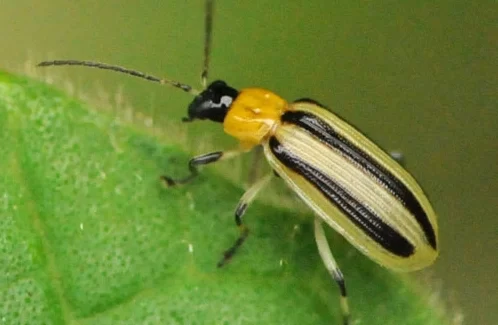
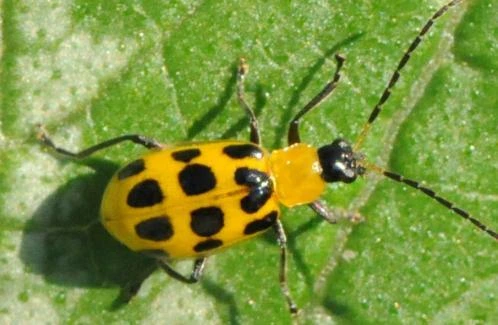
Life Cycle and Habits
Understanding the life cycle of cucumber beetles can greatly enhance your control efforts. These beetles undergo four stages: egg, larva, pupa, and adult.
- Eggs: Laid at the base of host plants, they hatch in about one week.
- Larvae: These small, cucumber-colored grubs feed on roots and can seriously damage plants.
- Adults: Often seen feeding on leaves, they prefer plants in the cucumber family, like cucumbers, melons, and squash.
Symptoms of Damage
Cucumber beetles can do a lot of damage. They not only munch on leaves but also create entry points for diseases:
- Wilting or yellowing leaves
- Stunted growth
- Holes in leaves
- More serious diseases like bacterial wilt can follow due to their feeding habits.
Recognizing these symptoms early can save your plants from severe damage.
Best 6 ways to kill/control cucumber beetles in your home garden
1. Handpicking and Traps: A Simple Yet Effective Approach
One of the most straightforward ways to deal with cucumber beetles is by handpicking them off the plants. While this may sound tedious, it is a tried-and-true method that can be highly effective, especially in smaller gardens. By removing beetles manually, you eliminate them on the spot without the need for chemicals.
Handpicking Beetles

Cucumber beetles are most active during the day, so you’ll likely spot them sunning themselves on leaves and flowers. Early mornings, however, when the beetles are more sluggish, offer an excellent opportunity to catch them off guard. Using gloves, gently pluck beetles off the plants and drop them into a bucket filled with soapy water. The soap breaks the surface tension, and the beetles drown quickly.
Pro Tip: Make sure to check the underside of leaves and near the base of plants, as beetles often hide in these locations.
Sticky Traps
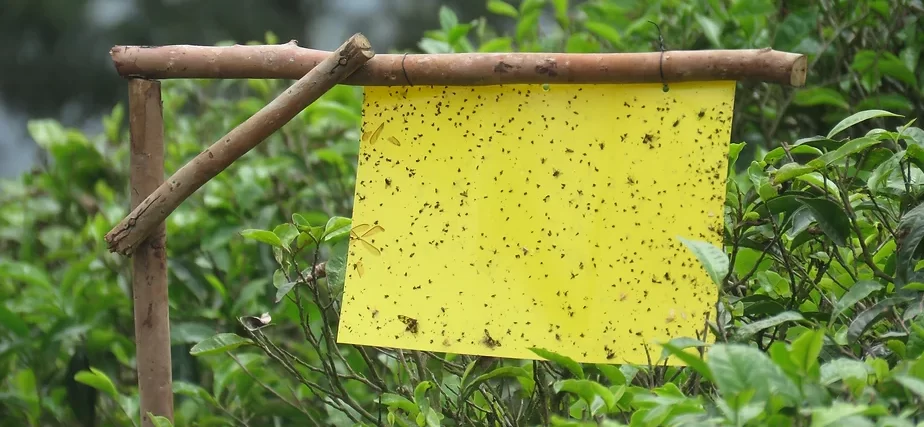
While handpicking can be effective, combining it with trapping methods can significantly enhance your cucumber beetle control efforts. One of the most popular trapping methods involves the use of yellow sticky traps. Cucumber beetles are attracted to yellow surfaces, and these traps take advantage of that instinct.
Place the sticky traps near your cucumber plants, positioning them around the perimeter or directly in the beds. These traps will lure beetles in, sticking them to the surface and preventing them from returning to the plants. You can easily find these traps in gardening stores, or you can make your own using yellow plastic cards coated with a sticky substance like petroleum jelly.
Why Handpicking and Traps Work?
Combining handpicking and sticky traps provides both immediate and passive protection for your plants. Handpicking allows you to take control of the situation directly, while sticky traps continue to work around the clock, capturing any beetles that manage to evade your grasp.
2. Neem Oil Spray: A Natural Insecticide with Lasting Effects
When it comes to organic solutions for pest control, neem oil is a powerful weapon in the gardener’s arsenal. Derived from the seeds of the neem tree (Azadirachta indica), neem oil contains azadirachtin, a naturally occurring compound that disrupts the feeding and reproduction of many pests, including cucumber beetles.

How Neem Oil Works
Neem oil doesn’t kill cucumber beetles instantly. Instead, it works by interfering with their hormonal systems. When beetles ingest plants treated with neem oil, they lose their appetite, preventing them from causing further damage. Over time, the beetles will also lose the ability to reproduce, reducing future generations.
Applying Neem Oil
To use neem oil effectively, mix it with water and a small amount of liquid soap (to help it adhere to the plant’s surface). Spray this mixture directly onto your cucumber plants, focusing on the undersides of the leaves, where cucumber beetles tend to hide. Reapply neem oil every 7 to 10 days or after heavy rainfall to maintain its effectiveness.
Here’s a simple recipe for making your neem oil spray:
- 1 tablespoon neem oil
- 1 teaspoon liquid soap (mild dish soap or castile soap works well)
- 1 quart of water
Mix the ingredients well, pour them into a spray bottle, and apply them in the early morning or late afternoon to avoid burning the plants in direct sunlight.
Safety and Effectiveness
Neem oil is safe for most beneficial insects, such as bees and ladybugs, as long as it’s applied directly to the plants and not the flowers where pollinators might land. Additionally, neem oil is biodegradable, making it a great eco-friendly option for gardeners concerned with sustainability.
3. Diatomaceous Earth: The Power of Silica
Diatomaceous earth (DE) is a natural, non-toxic powder made from fossilized diatoms, a type of algae. It works by dehydrating insects and damaging their exoskeletons, ultimately killing them without harming plants or humans.

How Diatomaceous Earth Works
When cucumber beetles come into contact with diatomaceous earth, the fine powder absorbs the lipids from their exoskeletons, causing them to dry out and die. This process is not instantaneous, but it is highly effective. Diatomaceous earth is particularly useful for killing cucumber beetle larvae, which feed on the roots of plants, as well as adult beetles.
Applying Diatomaceous Earth
To use DE effectively in your garden:
- Lightly dust the diatomaceous earth around the base of your cucumber plants.
- Sprinkle it directly onto leaves, stems, and any visible beetles.
- Reapply after rain or watering, as DE loses its effectiveness when wet.
Pro Tip: Use food-grade diatomaceous earth, as it is safe for humans, pets, and beneficial insects.
Why Diatomaceous Earth Is a Great Option?
Diatomaceous earth offers an organic, chemical-free solution to cucumber beetles. It can be used throughout the growing season and poses no threat to humans or wildlife. Moreover, DE is effective against a wide range of other garden pests, including aphids, slugs, and ants, making it a versatile tool for any gardener.
4. Row Covers: Physical Barriers for Preventing Infestations
One of the most effective non-chemical solutions for keeping cucumber beetles at bay is the use of row covers. These lightweight, breathable fabric covers create a physical barrier between the beetles and your plants, preventing them from laying eggs and feeding on the foliage.
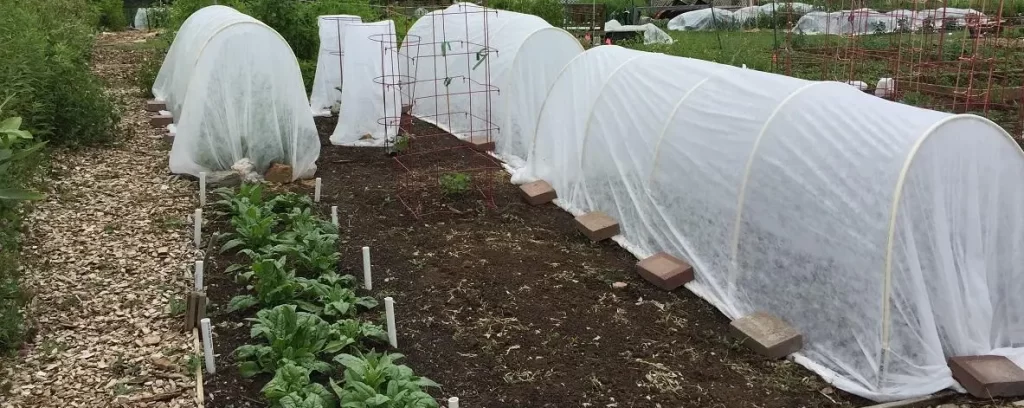
Using Row Covers Effectively
Row covers should be placed over your cucumber plants as soon as you plant seedlings or transplant young plants into the garden. Secure the edges of the row covers tightly around the base of the plants to prevent beetles from slipping through.
When to Remove Row Covers
While row covers provide excellent protection, you’ll need to remove them when your cucumber plants begin to flower to allow for pollination. To continue protecting your plants after removing the covers, consider using companion plants or natural insecticides like neem oil or diatomaceous earth.
Why Row Covers Are Effective?
Row covers offer a preventative solution, keeping cucumber beetles from reaching your plants in the first place. They’re especially useful in the early stages of plant growth when cucumber beetles are most likely to cause damage.
5. Beneficial Insects: Nature’s Pest Control
Introducing beneficial insects to your garden is a long-term strategy for managing cucumber beetles. These insects prey on cucumber beetles and other garden pests, keeping their populations in check naturally.
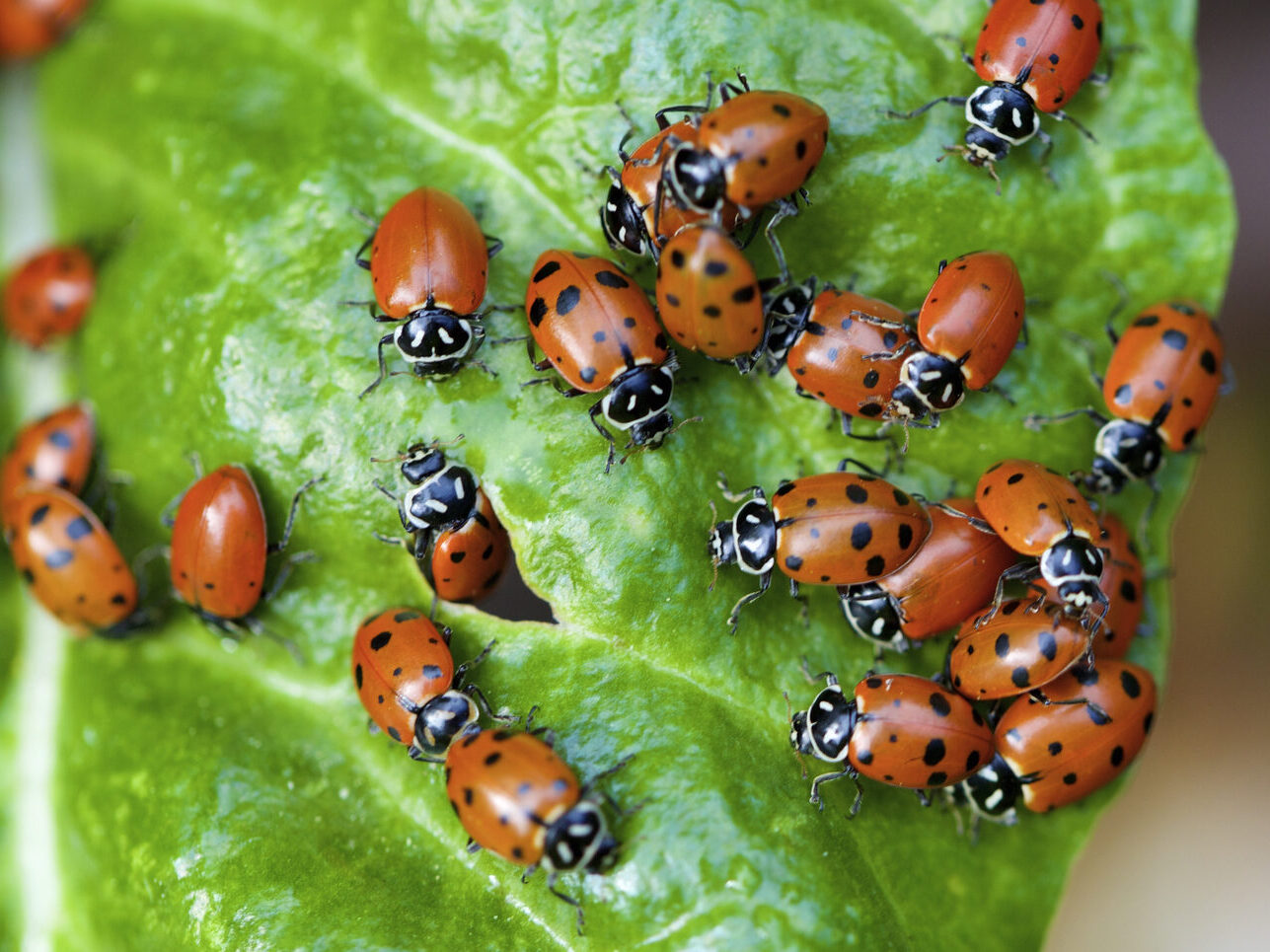
The Best Beneficial Insects for Cucumber Beetle Control
Several types of beneficial insects can help control cucumber beetles, including:
- Ladybugs: Known for their voracious appetite for aphids, ladybugs also feed on cucumber beetle larvae.
- Lacewings: These delicate insects are predators of many garden pests, including beetle larvae and aphids.
- Soldier Beetles: Similar in appearance to cucumber beetles, soldier beetles are beneficial predators that feed on cucumber beetles and other pests.
Attracting Beneficial Insects to Your Garden
To attract beneficial insects, plant a variety of flowers that provide nectar and pollen, such as:
- Marigolds
- Calendula
- Dill
- Fennel
- Alyssum
You can also purchase and release beneficial insects directly into your garden, ensuring an immediate boost to your pest control efforts.
Why Beneficial Insects Are a Smart Strategy?
Using beneficial insects is a sustainable, eco-friendly approach to pest control. By attracting these natural predators to your garden, you create a self-regulating ecosystem that reduces the need for chemical interventions.
6. Insecticidal Soaps: A Safe, Organic Solution for Beetle Control
Insecticidal soaps are a safe, organic way to kill cucumber beetles and other soft-bodied pests. These soaps work by penetrating the insect’s outer layer, causing it to dehydrate and die.
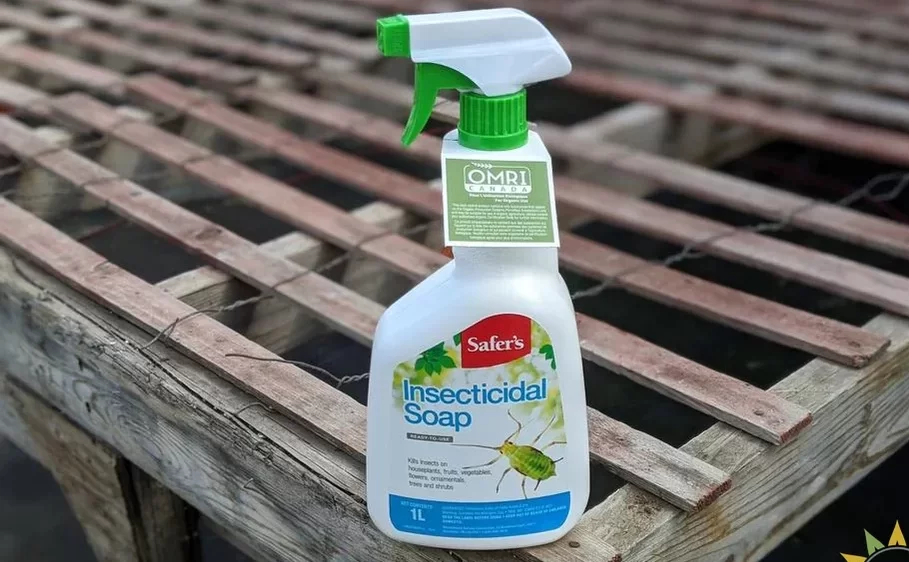
How to Use Insecticidal Soap
Insecticidal soaps are most effective when sprayed directly onto cucumber beetles or their larvae. Apply the soap solution early in the morning or late in the afternoon to avoid sunscald on the plants. Be sure to cover all parts of the plant, including the undersides of leaves.
You can either purchase insecticidal soap from a garden centre or make your own by mixing 1 tablespoon of mild dish soap with 1 quart of water.
Benefits of Insecticidal Soap
- Safe for organic gardening: Insecticidal soaps are non-toxic to humans, pets, and beneficial insects.
- Effective against a range of pests: In addition to cucumber beetles, insecticidal soap works on aphids, whiteflies, and spider mites.
Extra Tips:
- Delayed planting can avoid the worst damage.
- Avoid planting your crop next to alternative host plants like melons, pumpkins or beans.
- Use kaolin clay as a protective film to ward off the beetles.
- Use traps to monitor and mass-catch the insect.
- Remove residues after harvest and destroy them.
- Plan a crop rotation with non-susceptible plants.
Always consider an integrated approach with preventive measures together with biological treatments if available. Damaging populations of cucumber beetles are usually treated with insecticides. Insecticides of the group of acetamiprid or fendropathrin should only be applied if the beetle occurs in high numbers, but take into account environmental issues. Soil treatments with pyrethroids are another option.
That’s It: Achieving Long-Term Success in Cucumber Beetle Control
Managing cucumber beetles in your home garden requires persistence and a multi-faceted approach. By combining handpicking, neem oil sprays, diatomaceous earth, row covers, beneficial insects, and insecticidal soaps, you can effectively control cucumber beetle populations and protect your plants from further damage.
It’s important to remain vigilant throughout the growing season, regularly inspecting your plants for signs of beetles or their larvae. Early detection is key to preventing widespread damage.
By implementing these six proven methods, you’ll create a healthier, more resilient garden that can thrive even in the face of cucumber beetle infestations. With dedication and the right tools, your cucumber plants will reward you with a bountiful, pest-free harvest.
Additional Resources:
- Best Neem Oil Products for Gardeners
- How to get rid of whiteflies: 15 Natural treatment options
- Best spider mites treatment for plants: Best 3 Home Remedies
- How to get rid of broad mites: Best Broad mite Insecticide
- All Pests & diseases Guides
FAQ
What are the signs of a cucumber beetle infestation?
Look for wilting or yellowing leaves, holes in foliage, and the actual beetles themselves on your plants.
Are there any natural repellents for cucumber beetles?
Yes, companion planting with marigolds and other pest-repellent plants can help.
How can I prevent cucumber beetles from returning next season?
Crop rotation and ongoing garden maintenance can help deter these pests in the following years.
Is it safe to use chemical insecticides around edible plants?
Some are safe; however, always read labels and understand the implications for your food production.
Can I use multiple methods together for cucumber beetle control?
Absolutely! Combining methods can increase your chances of effectively managing these pests in your garden.


